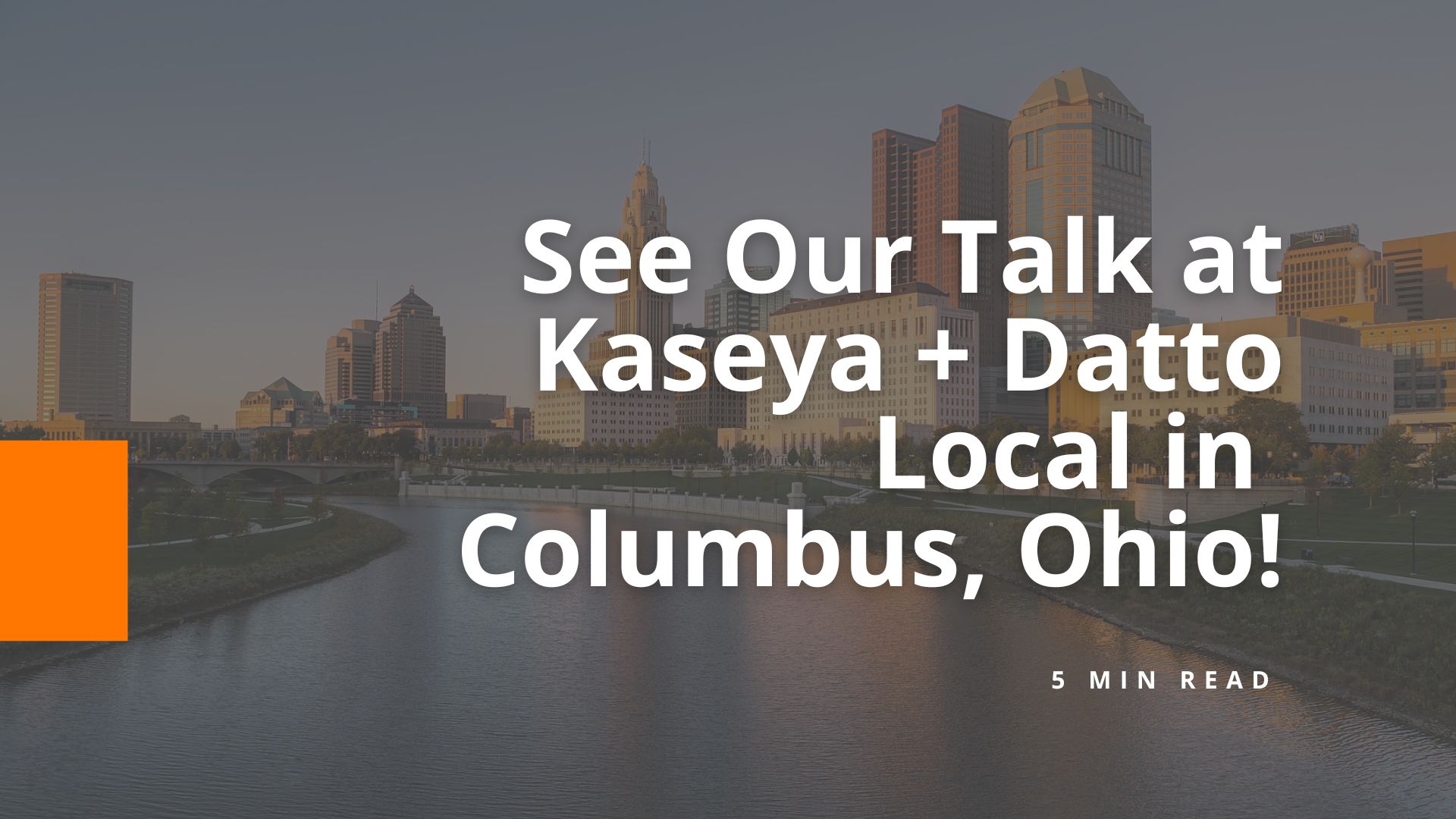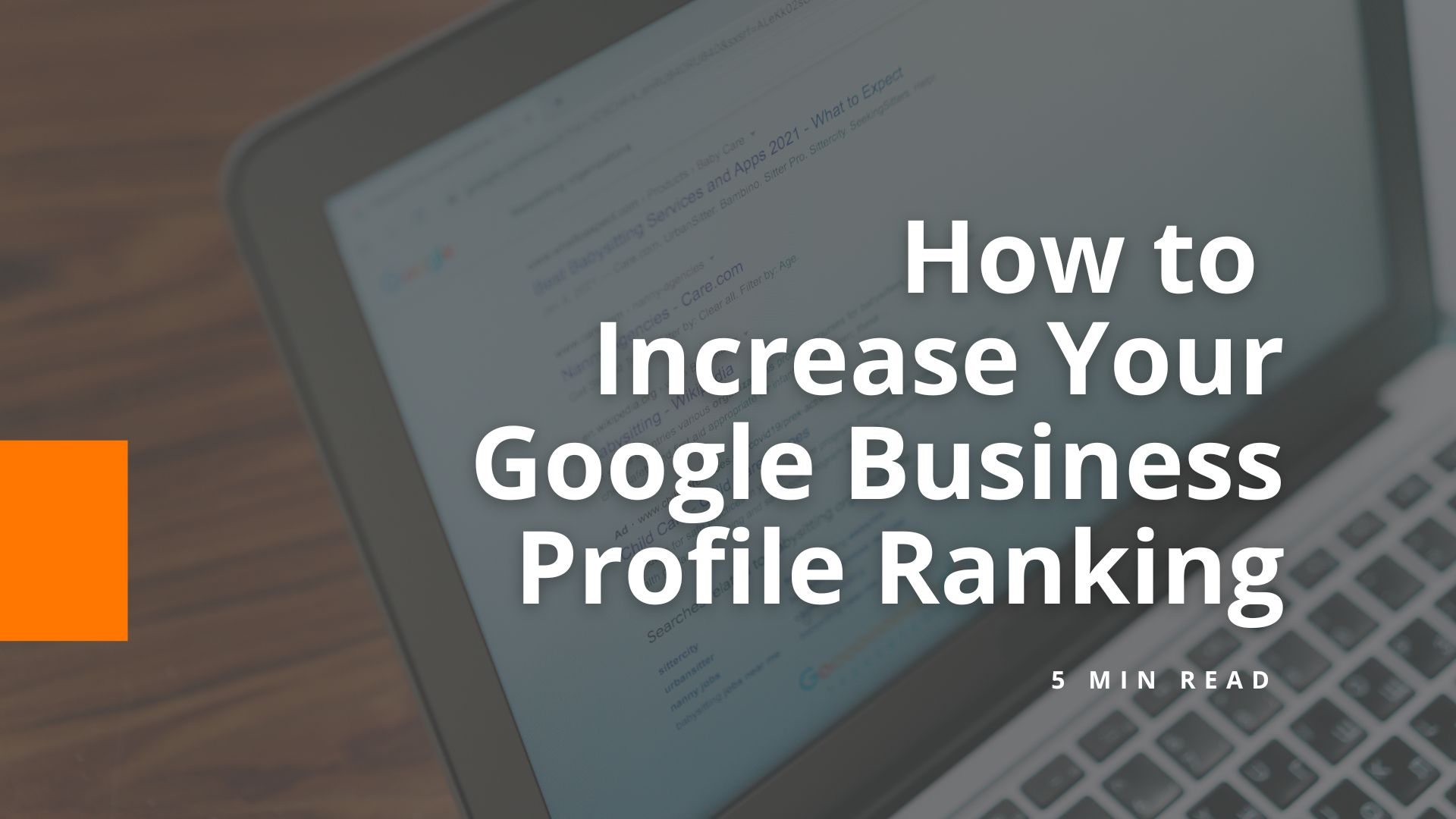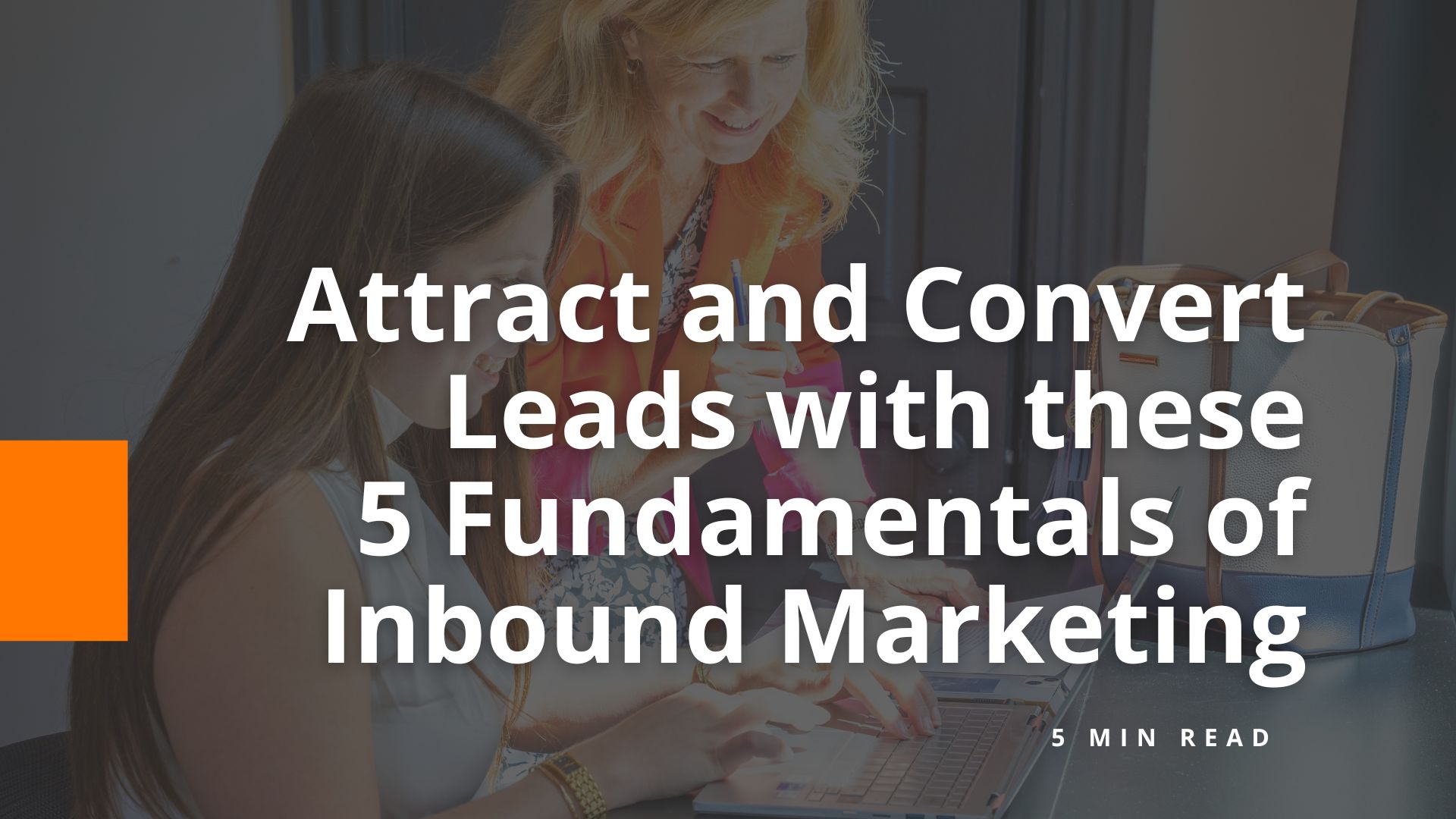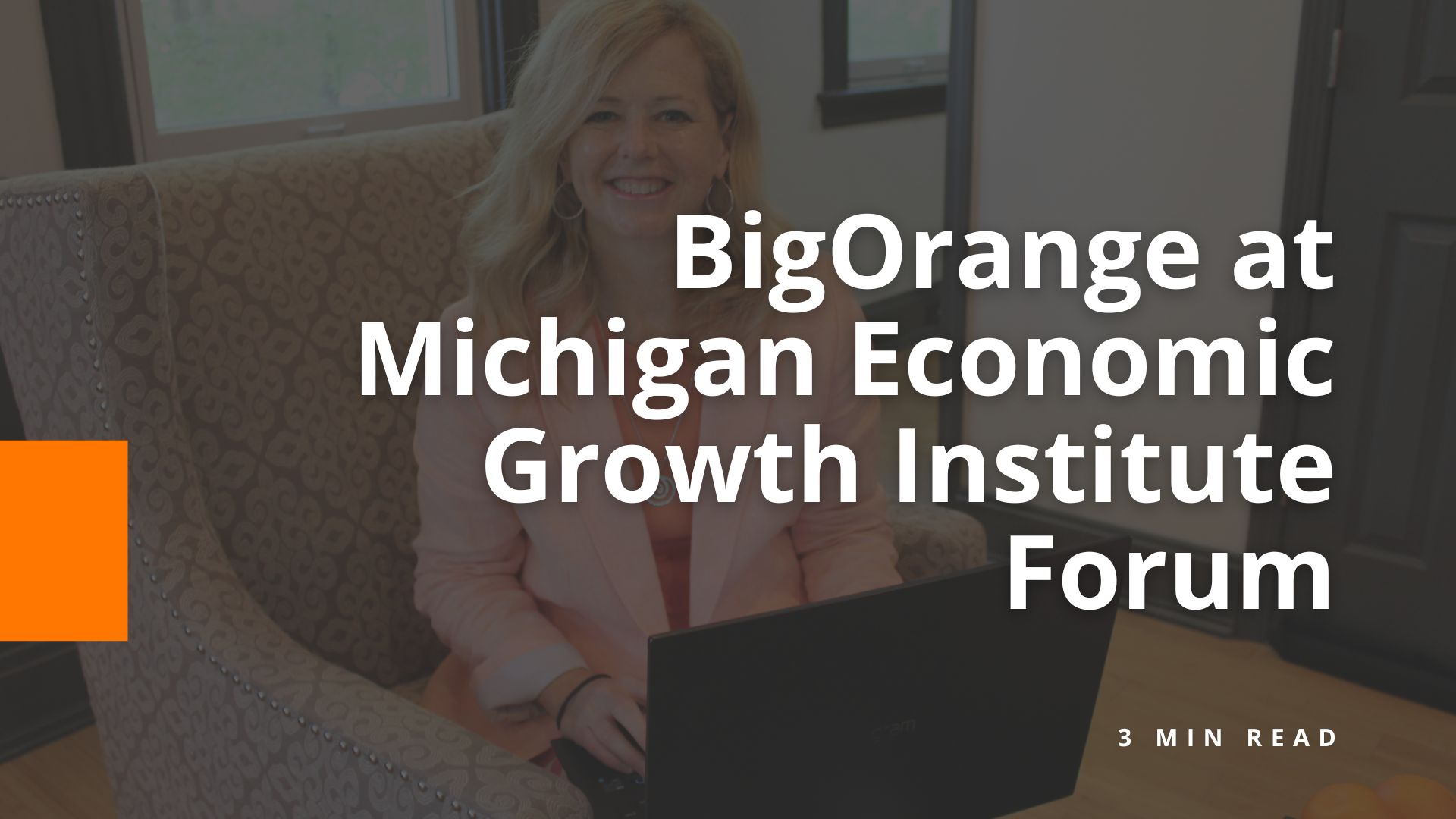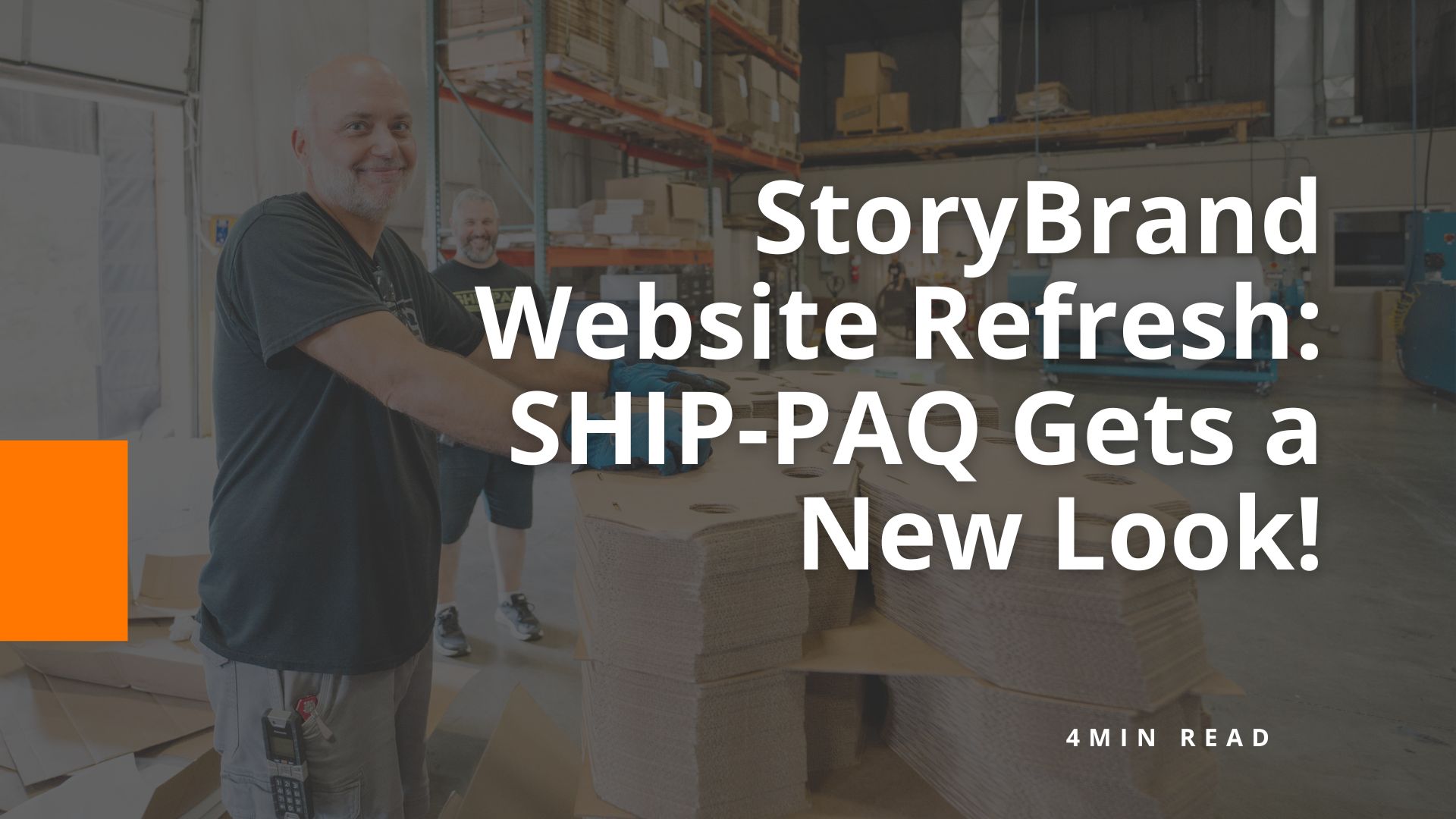Is a WordPress or HubSpot Website Best for You?
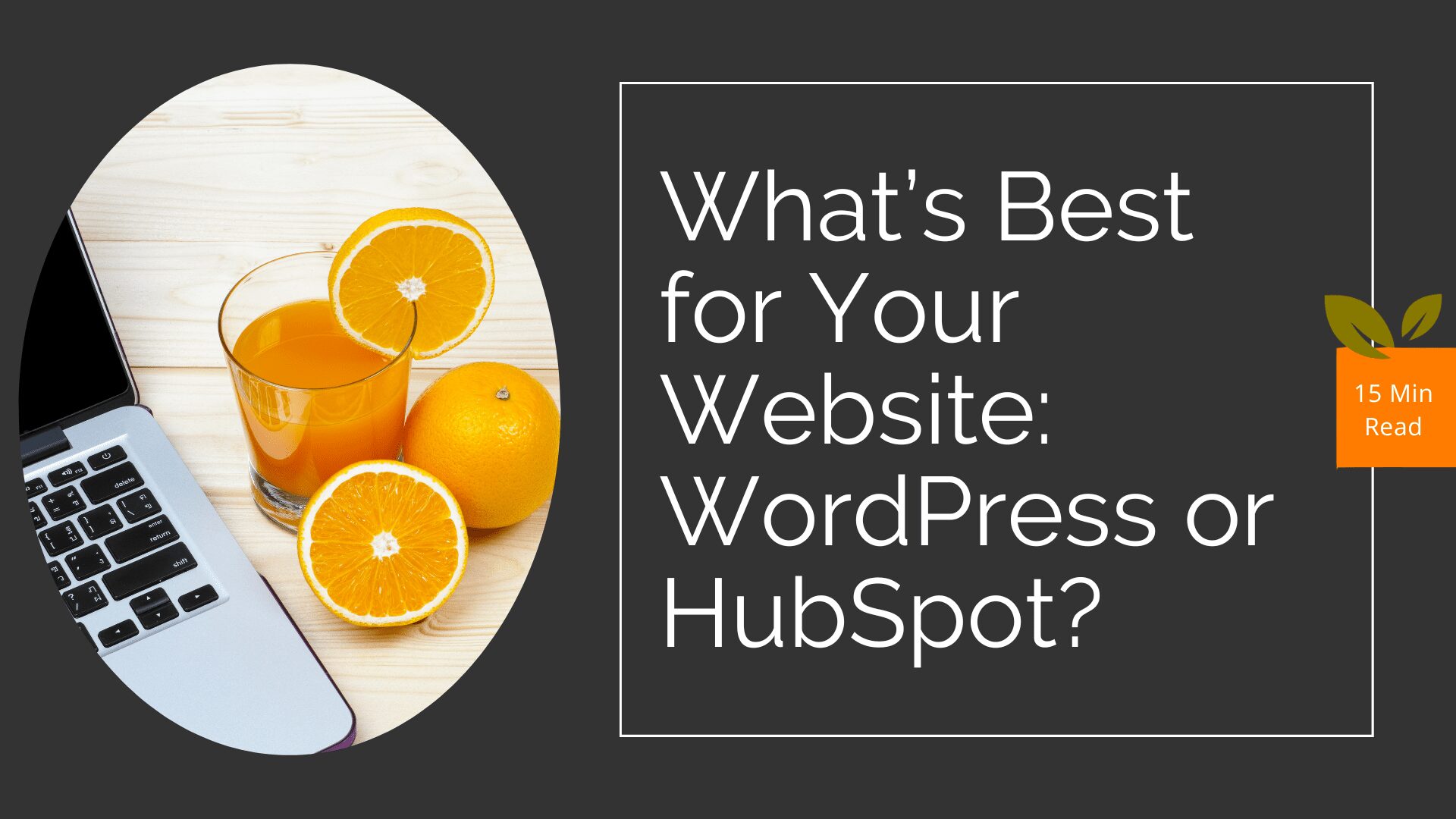
Are you wondering if a WordPress or HubSpot website is right for you? We’re not going to write another article about “HubSpot vs. WordPress.” We’re not going to tell you our opinion out of the gate. Our roundup of pros and cons with each option are here to help you choose whether WordPress or HubSpot is right for your website. Plus we will get into how they work well together at the end of this post.
At the time of writing this, I have equal experience with both WordPress and HubSpot, and can make a solid case to make either one look better than the other. What you choose of course is up to what’s important for your website and fits in your budget. Any web designers and developers you’re speaking with will have recommendations or preferences based on their experience or offering.
The Basics
The first concept to understand is that a content management system (CMS) is software to manage the creation and changes to digital content and websites. Which CMS is best for you comes down to your priorities and needs with your website. When it comes to choosing a website CMS, there are over 250 options. This is a staggering number that can leave anyone feeling too overwhelmed to choose. (If it helps, these 10 are the most popular CMS options.)
Lately, we’ve had customers and potential customers asking about HubSpot as a website CMS. We are starting to work with more companies that have their website, blog and landing pages already on HubSpot when they find us. Some companies that already use HubSpot for marketing and as a CRM are asking how to choose between a WordPress or HubSpot website on their next site refresh. So, let’s dive in.
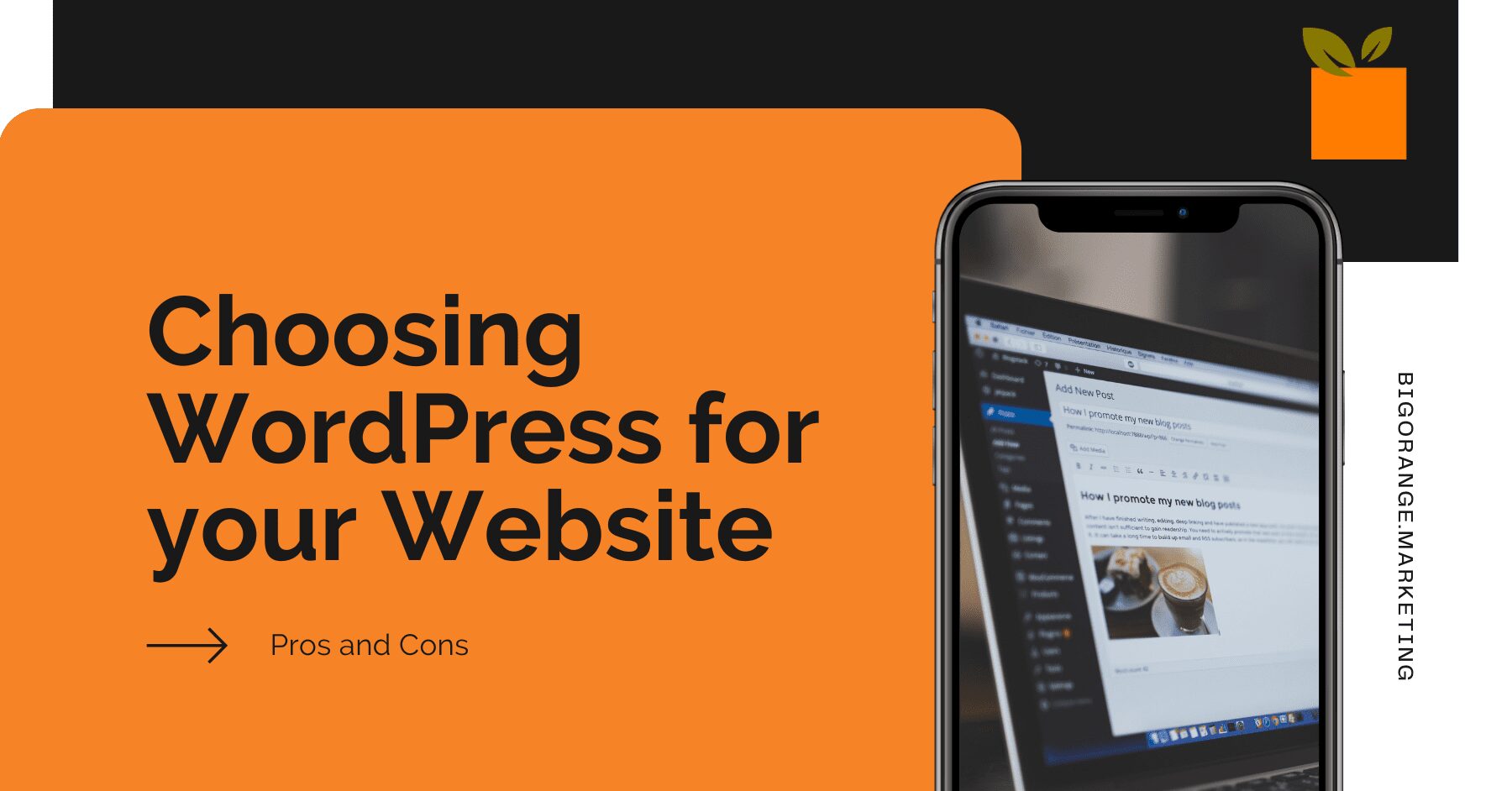
WordPress as a Website CMS
| Summary of WordPress CMS Pros | Summary of WordPress CMS Cons |
| You have unlimited WordPress themes and modern looks to browse | The WordPress editor in its default state is out of date |
| WordPress has the most plugins and add-ons to achieve whatever you need | WordPress requires more maintenance than other CMS choices |
| WordPress has the largest talent pool to support your growth needs | WordPress is a large and easy target for hackers |
| WordPress is the most popular website CMS in the world | WordPress plugins can quickly hinder performance |
| WordPress is very affordable | Not All WordPress Themes and Plugins are Compatible with Each Other |
Pro: Unlimited WordPress Themes and Modern Looks to Browse
There is no shortage of inspiration for what’s possible when it comes to building your website on WordPress. Did you know that WordPress has an estimated 31,000 and counting themes? ThemeForest is full of choices that come with the theme documentation on working with or making edits. Or, you can build your own fresh design or one that looks similar to something you like. This can be achieved with a low-cost theme and editor like BeaverBuilder. Meanwhile, HubSpot only has around 400 pre-built looks, designs and themes you can work with.
Pro: WordPress Has the Most Plugins and Add-Ons to Achieve Whatever You Need
Plugins and even third-party tools (with a tracking code) help meet your unique goals or analyze what’s working on your WordPress website. There are WordPress plugins, integrations with other tools and premium add-on options to use with WordPress for days. Meaning you can add many interactive components (sliders, calendars, eCommerce, videos, galleries, events) to your site. Also, you can implement SEO best practices and powerful marketing tools at a fraction of the cost. Vetting plugins for their functionality, popularity, security, support and compatibility with everything you use is important. You won’t want to use too many plugins. You should also avoid using multiple plugins that ultimately do the same thing.
Pro: WordPress Has the Largest Talent Pool to Support Your Growth
WordPress gives you an advantage with a huge community of flexible design and development professionals. If you ever feel stuck, there’s always a person who can contribute and help you move forward. Some WordPress developers may focus on building, maintaining and optimizing websites. Others may focus on creating new themes and plugins, or even enhancing security. And we all collectively work to improve WordPress.
Whether you need a full-time, part-time, temporary, contract or freelance WordPress developer, there is a large pool of professionals available. You can find WordPress developers (or designers) on sites like Upwork or through a local talent agency. Most large cities around the globe also have a local not-for-profit WordCamp and other WordPress meetup groups.
Pro: WordPress Is the Most Popular Website CMS in the World
There are 835 million and counting websites on WordPress. What?! That’s two and moving towards three out of every five websites in the world. About 15 percent of the world’s highest traffic websites are also on WordPress, reassuring it’s a good choice. WordPress an open source and free platform built by developers and for developers. Many other CMS choices are newer and self serving with a DIY and non-developer as their target user. There are also CMS solutions for simplifying tasks when running an online store (Shopify) or even those geared for nonprofit needs.
Pro: WordPress Is Very Affordable
WordPress in itself is completely free to use for a website and HubSpot is not. You need to cover your domain and hosting plan. Hopefully you’ll choose somewhere with great speed, uptime, SSL (Secure Socket Layer) security certificates and CDN options (Content Delivery Network). Once you have a hosting plan, like WPEngine, you install WordPress on the server space you pay to lend out. Some hosts will require you download the software and install it yourself. While others, like WPEngine, will include it with any paid hosting plan. We recommend you don’t go to WordPress.com to build your website. It will cost much more to host there with Jetpack. You’ll pay even more to unlock the full range of WordPress features and have access to themes or plugins there.
At the time of this writing it costs $450 to $650 per year for website hosting that is optimal for WordPress. That includes a $20 to $50 per month hosting plan, which is suitable for most small to medium-sized businesses. You will also need to consider the cost of a domain, which can cost anywhere from pennies to thousands of dollars (when buying a domain from another brand or successful website). A $10-$50 annual cost for a new domain is what we typically see. Your theme and any premium plugins may cost extra, but are still within reach while delivering a ton of value.
Con: The WordPress Editor in its Default State Is Out of Date
WordPress right out of the box in its default state is amazing for managing your blog. For website pages that WOW, you likely need to add something else (a paid theme and even a paid builder). Or you will need both a savvy design and development resource. Without a front-end builder for WordPress, like BeaverBuilder or Elementor, it can be difficult to work with.
Designers, marketers, writers or any non-developers can not work on websites without a front-end drag and drop experience. Then WordPress has a lack of a live preview for what you’re working on. These are some of the expectations for a modern website CMS. WordPress is not heading in that direction with blocks and having to click to get a preview.
Con: WordPress Requires More Maintenance Than Other CMS Choices
Auto-updates are nice and can be setup to save time, maintain performance and improve your security. A manual check-in, at least monthly, if not weekly or bi-weekly, is a good measure to take. A new version of WordPress is typically rolling out every couple of months. This also means your plugins will have new versions to install and test, too.
Without a maintenance strategy and resource, a general deprecation of both security and functionality on your site will occur. The technology industry moves fast. You may have plugins or software you rely on change terms. Or plugins may no longer have support or experience major updates in acquisitions. You may have to research additional options and replace certain plugins all together. Make sure you have time to learn how to properly manage updates. Or even better, have a resource or agency that will do top-notch maintenance for you.
Con: WordPress Is a Large and Easy Target for Hackers
Since WordPress is so popular and the most used website platform, it’s an enticing target for hackers. WordPress is maintained by the user, many without a background in cyber security. This makes it highly vulnerable. Although a secure website host like WPEngine holds high security standards and certifications, it’s not enough. If you are not active in maintaining your website’s software, users, theme and plugins, you risk security vulnerabilities. When things you use to power your site fall out of date, it’s an easy way in. People are less likely to target a CMS with multiple layers of enterprise level security like HubSpot.
And like anything else, weak passwords, password sharing or data leaks are also prone to occur with WordPress. Do yourself a favor and install this free plugin for WordPress security called Wordfence, which can monitor and block hackers from your site, plus identify where vulnerabilities are and give you a heads up. And it will empower you to have 2-factor authentication when people login to work on your WordPress webite.
Con: WordPress Plugins Can Quickly Hinder Performance
In the past couple of years, website performance has become an emphasis on SEO rankings. Not only is how fast your site loads important. You want to minimize large files on a website. You also need to eliminate things that drastically shift or change when viewed between your typical desktop or laptop and mobile phone screen size.
When poor performance on your website happens, you’ll need to get to the source of slow load times, and remove the problems. Sometimes, this is plugins. You can try to find alternatives with better performance. Or, you can install a plugin that is compatible with your setup to do things like caching, compressing images and minimizing the scripts that may be causing issues. WPRocket is a good choice.
Things many WordPress sites will use, such as front-end builders can be heavy and slow things down significantly. The pros outweigh the cons by reducing the time it takes to make edits and site changes without code. Adding too many plugins on a WordPress website is almost always problematic to your website performance.
Con: Not All WordPress Themes and Plugins Are Compatible With Each Other
Recently, I brought a well-known eCommerce plugin into the picture on a customer site in development. That plugin had scripts that wiped out an entire site’s header, navigation and its prior flawless functionality. Then the checkout page that came with the site’s theme no longer worked. There were workarounds and modifications galore. I deactivated the plugin and removed the bad scripts. Then, I tried common things like applying a different theme to the problem pages. Even with these attempts and additional developers jumping in, both of the problems persisted. The project changed over to a new solution we’re more familiar with to go in place of what the customer had and initially preferred to use.
Choosing the right plugins that work together will require a developer and a testing environment. Adding them to your live site out of excitement or having luck so far is risky. It’s frustrating that so many tutorials and training tools out there for WordPress are for a specific builder, theme, setup or plugin — not so much the same configuration your WordPress site will have. You will want to make sure you are familiar with plugins, who built them, why, their requirements and test for any conflict. You can also add revision history and site-restoring capabilities on your site.
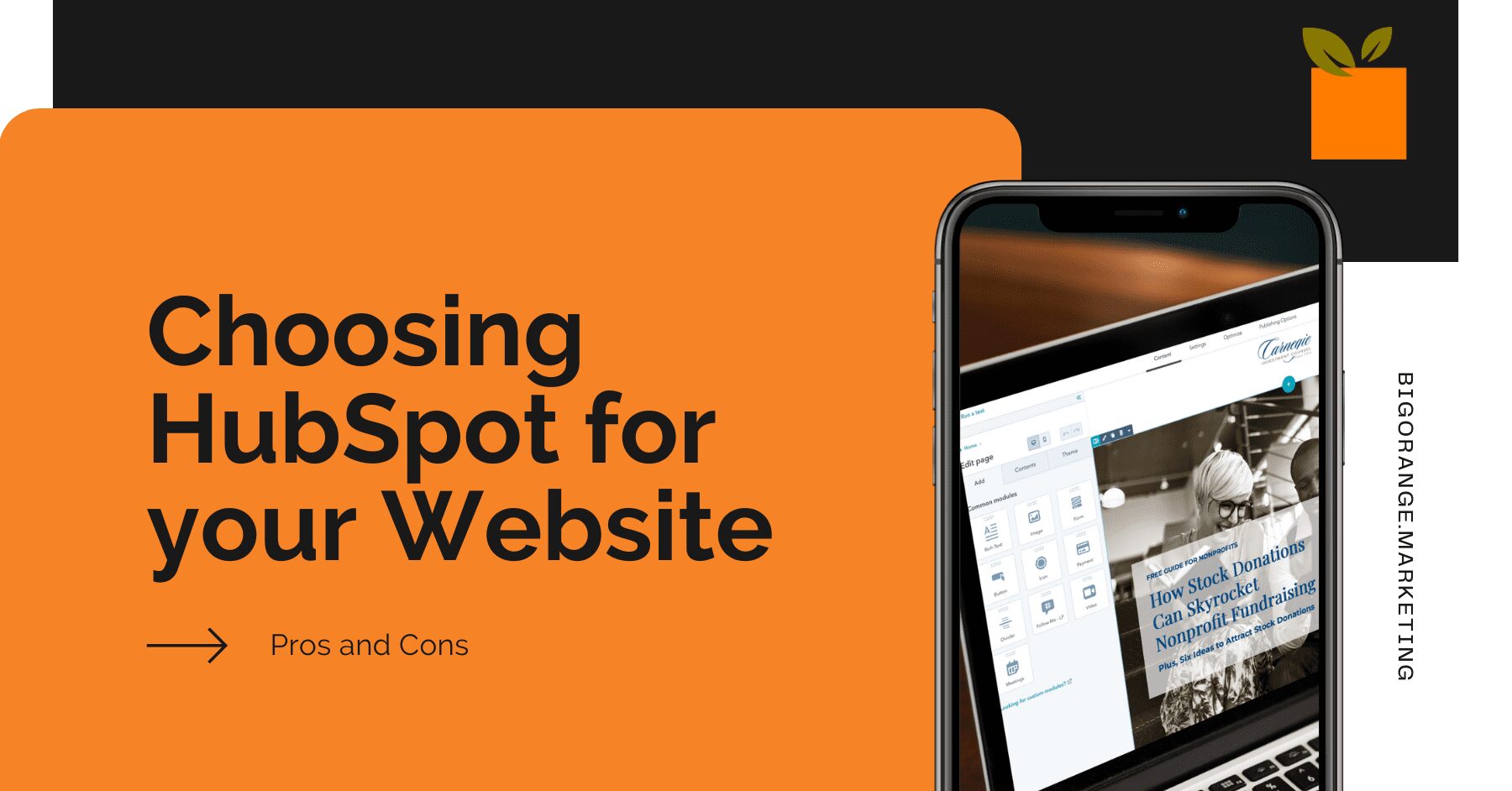
HubSpot as a Website CMS
| Summary of HubSpot CMS Pros | Summary of HubSpot CMS Cons |
| HubSpot delivers clear data and attribution | HubSpot has limited design templates and no ecommerce |
| HubSpot’s smart content and personalization rocks | HubSpot CMS is very expensive |
| HubSpot CMS is secure, performance-driven and low-maintenance | HubSpot CMS has its own proprietary programming language |
| HubSpot CMS is modern and easy to use | HubSpot CMS requires an “all-in” approach for good SEO |
| HubSpot makes it difficult to apply responsive customizations |
“Half my advertising spend is wasted; the trouble is, I don’t know which half.”
John Wanamaker
Pro: HubSpot Delivers Clear Data and Attribution
It’s easy to drill down and see which website pages, blog posts, white papers, webinars, courses, social posts or ads work and drive conversions. This information, when clearly presented, is valuable for budgeting and making smart marketing decisions.
WordPress will not provide any of this data to you or make it easy to gather. You can get really close with a combination of WordPress (as your CMS) and HubSpot (marketing and CRM) setup. Or you can setup Google Analytics on your WordPress website with goal and conversion tracking. Either way, you need a good marketing resource and CRM solution to get clear and full picture data.
Pro: HubSpot’s Smart Content and Personalization Rocks
Want your website to say, “Hey, welcome back Gina!” Or, “In this ebook, you’ll learn how (your company’s name) can thrive with smart content”? Personalization tokens available in HubSpot’s editor make it simple to personalize your website, blog or emails to contacts in your CRM.
Smart content typically requires content volume that’s above and beyond what many small to mid-size firms today produce. This is one of the coolest things about the HubSpot CMS. Smart content made simple. If you have tons of segments and offers for different stages of the customer journey, you can make sure what each person with specific requirements sees throughout your website is something most likely to be relevant to them.
HubSpot forms are smart, too, eliminating the need for people to answer the same questions multiple times. This presents you the option to remove the form required to grab a resource all together. If are people already in your CRM they will only click a button to grab it. Or, you can ask them new and further qualifying questions.
You’ll typically see a lot more lead conversions and reconversions with smart content. This experience is easy to create in HubSpot or even if your website is not here and in WordPress, you can use smart content in any HubSpot emails, blogs or landing pages.
Pro: HubSpot CMS is Secure, Performance-Driven and Low-Maintenance
There is no need to update your website software and plugins or monitor security as heavily or arguably, at all, with HubSpot. For some, this helps justify the higher costs of using HubSpot as a website CMS over WordPress. There is likely not going to be any bugs when these auto CMS updates do happen. HubSpot always gives a heads up if they are dropping or adding new features, too. Any deprecation of features or elements built on your website will not come as a surprise.
HubSpot packs Soc 2 Type 2 and ISO 27001 security certifications, a firewall and has 2FA (two-factor authentication) for access. Your website will have enterprise level security that is managed by a software company, making it less of a target. Sites come with a powerful content delivery network (CDN) to boost performance and your site will have a SSL certificate. These security needs can all cost extra or require higher plans with other web hosts. Plus you can easily manage, add, remove and give specific privileges and access to users.
The HubSpot CMS is very lightweight and gives users faster loading times and a CDN that would typically be an add-on with many other hosting providers or multiple plugins with something like WordPress.
Pro: HubSpot CMS Is Modern and Easy to Use
Your HubSpot website may not be or look as cool within your budget as a WordPress site could be. For some, that’s okay, after all, minimal designs are in. What is built in HubSpot for you is typically simple to edit and work with. Pre-made designs for HubSpot are easy to find here. HubSpot’s website editor is more modern. WordPress needs a plugin and front-end builder to compete.
Most good website CMS options today allow you to edit your site on the front-end in a drag and drop style without knowing code or programming language. HubSpot definitely considers this and thrives with their simple site editing experience.
Con: HubSpot Has Limited Design Templates and no eCommerce
A way to sell physical products is pretty non-existent with HubSpot, requiring anyone to use an API (application programming interface) and bring outside tools in. Anticipate higher development costs for making eCommerce possible on a HubSpot website. Not only that, also anticipate a higher cost for anything custom in the HubSpot CMS. In terms of eCommerce, this could be changing soon with the release of HubSpot payments. Payments are ideal when billing for services, ongoing retainers or selling things like training, courses or whitepapers. WordPress has plenty of (free) reliable plugins ready to go for eCommerce. WordPress is easier to sell a wider range of products on your site.
Con: HubSpot CMS Is Very Expensive
Choosing HubSpot as a website CMS only makes sense with an active and well-utilized HubSpot marketing software plan in place. Exact prices for HubSpot are very hard to state and subject to change. Your marketing, sales, operations, website or support needs with the platform and database typically evolve. Today, you can expect $360 a month or $4,320 billed annually for the professional version of the HubSpot CMS Hub.
You also need to factor in the $9,600 annual cost of your HubSpot professional or higher software plan. A professional plan or higher is needed to meet your email, blog, landing page, automation, analytics and overall marketing needs. Additionally, your sales software will cost extra and be charged per month and per user. It’s well over a $15,000 annual investment for the software alone. A key thing to consider when selecting to build a WordPress or HubSpot website. How vetted are you in HubSpot? Does it make sense to spend 2-3x for their website technology?
Con: HubSpot CMS Has Its Own Proprietary Programming Language
Although it’s not rocket science, HubSpot has their own programming language that powers many aspects of the CMS. hubL is almost always needed for creating custom templates and modules on a HubSpot website. The large majority of web developers out there do not know hubL. The cost is higher and lead times are longer. Many developers “say” they can build what you want in HubSpot. A lower cost resource will often hard-code a custom template or modules in. That means they are no longer easy to work with or edit on the front-end or without knowing code.
First, your main site elements, like stylesheets, modules and how FTP (file transfer protocol) works are all different on HubSpot. Second, HubSpot’s Design Manager is another unique thing to learn. Having a HubSpot partner that is building or consulting on your website will help get your unique needs on the radar.
To sum this up, learning hubL will take any developer extra time. It requires some level of consistency working with HubSpot websites to maintain this knowledge. Having somewhere to turn for custom work in the HubSpot CMS can be costly and take longer than anticipated to complete.
Con: HubSpot CMS Requires an “All-In” Approach for Good SEO
You can have a WordPress website and HubSpot hosted blog and/or landing pages. Companies that are early adopters have enough of a link profile with their blogs and have some authority on their HubSpot subdomains. There’s no need to move, and you can reoutfit your legacy HubSpot blog to a new design that matches your website, no matter where the website is built.
A standalone HubSpot instance for only your website, your blog or landing pages, and not all three (if you are starting today) has drawbacks. Having content you want people to find (in search) on subdomains and not on your main domain is often harmful. This spreads your content, links and rankings out to two sites instead of focusing on one. It can require double the effort to gain traction. If your subdomain setup is older and engaged with before the explosion of content, it is likely still working for you today.
To get your HubSpot blog and landing pages on your main root domain, your website has to be there, too. In conclusion, your SEO structure is out of date if you are only using “parts of” the HubSpot CMS and are not all-in and on your main root domain. WordPress or HubSpot can store all of your website content needs on your main root domain. When multiple CMS solutions are in use together, you end up with subdomains. Because of the higher cost, this is a common case with HubSpot.
Con: HubSpot Makes it Difficult to Apply Responsive Customizations
The HubSpot experience to control rows, columns and how things display by each screen size (aka breakpoint) is not intuitive enough. There are best practices, multiple ways to use CSS for better responsiveness. And, HubSpot does have more and more breakpoint capabilities coming on their horizon. Making HubSpot pages look awesome regardless of screen size can be time-consuming. And it leaves an area prone for future errors with extra programming requirements coming across your entire website and team.
For one example, say you want to use full-width images in backgrounds of rows on your HubSpot website design. To do this, you have to take extra steps to add better image positioning CSS for the mobile display. Or, you can code new stacking rules into your page all together, which I would not recommend. It’s simple for a non-development user to grab any of the existing HubSpot design templates. Then they will change the background photo in them to something of their own. Maybe they didn’t look at the mobile view or they did and feel stuck. Most images out there, especially those focusing on people, will yield an unpleasant result in full-width on HubSpot. Always check your HubSpot pages carefully on mobile devices and make adjustments before you publish them.
A Visual Aide
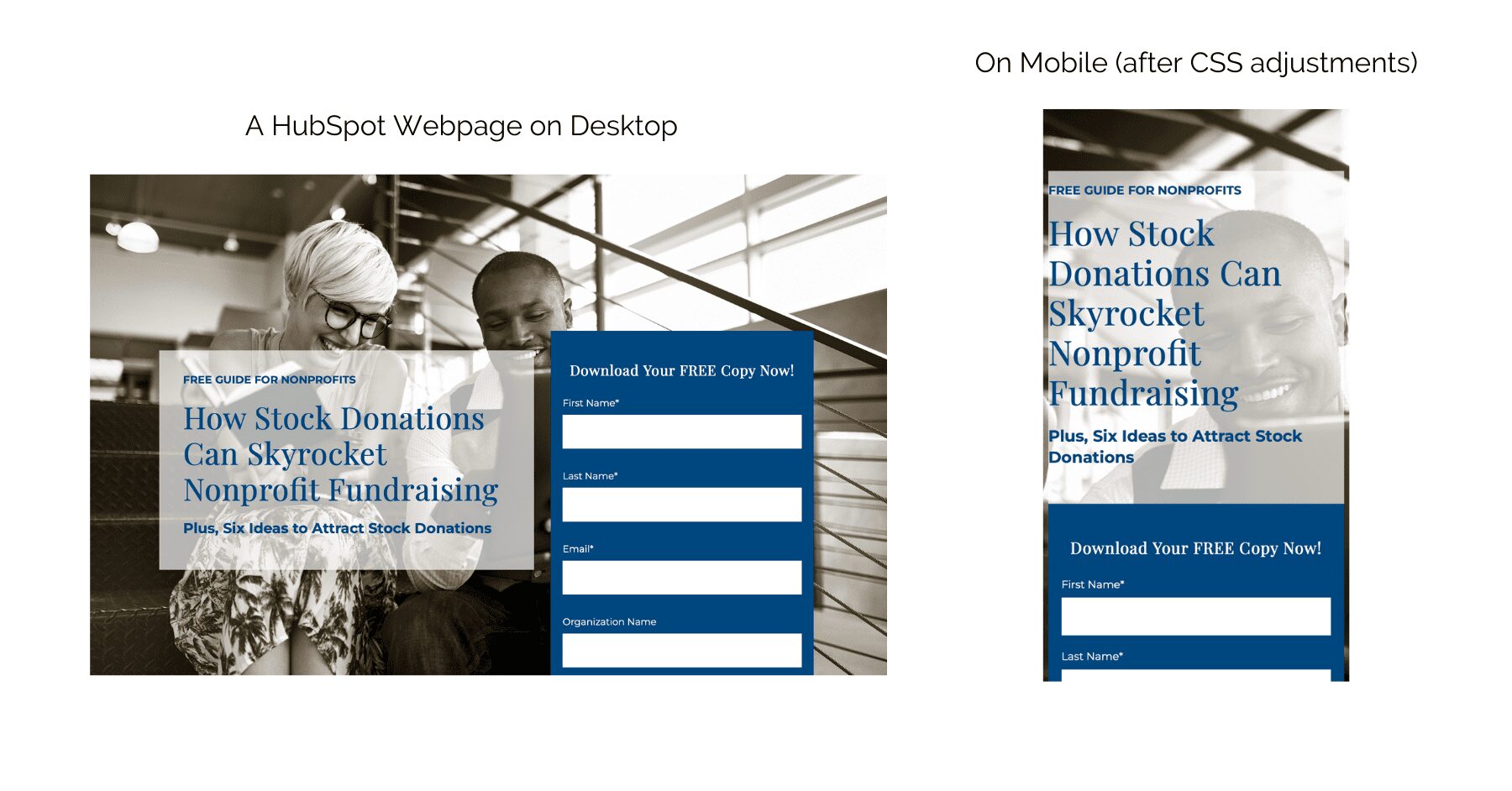
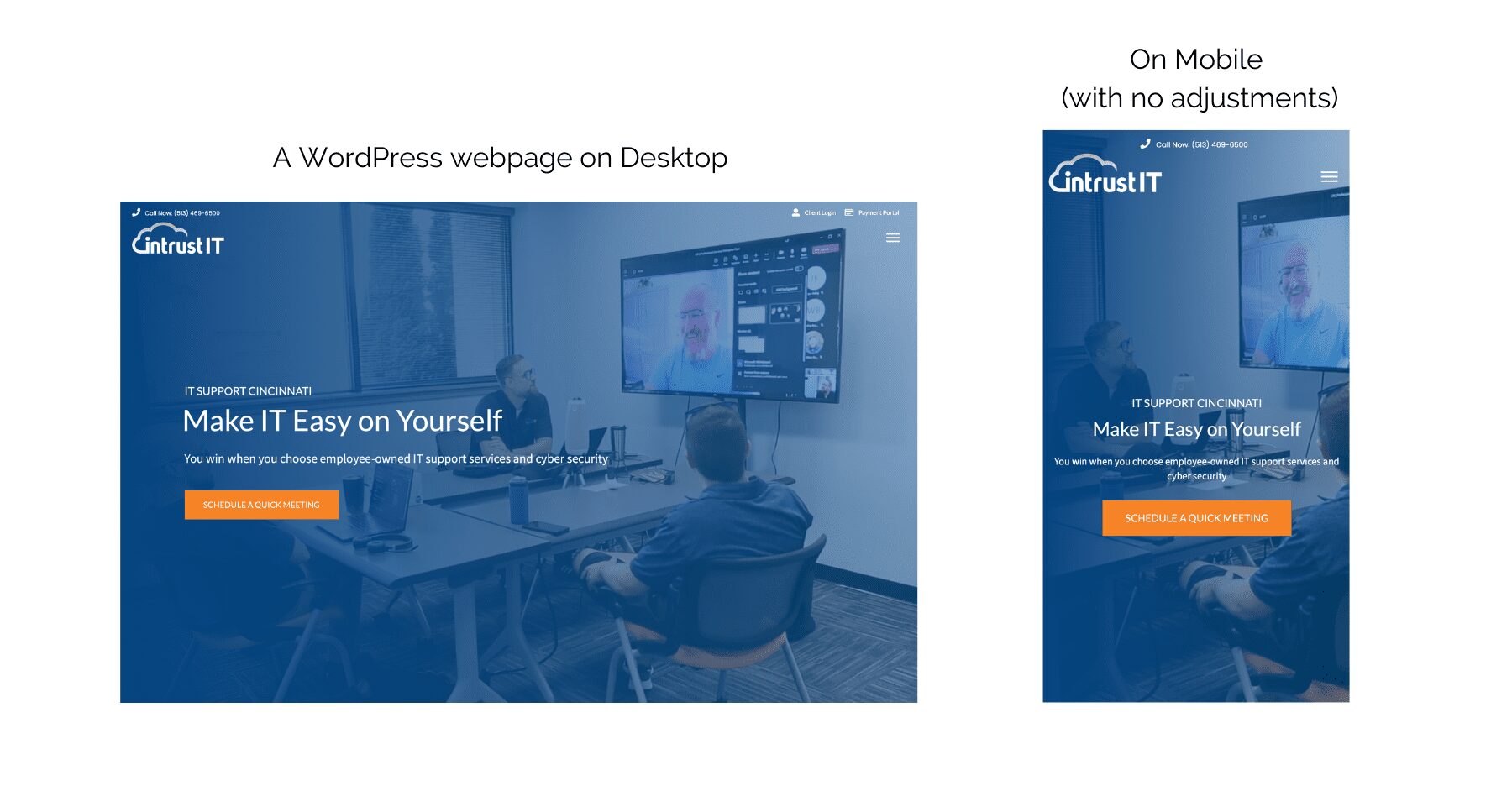
In the first example of two similar designs shown above, ideally, I would want to show the full background image on only my desktop. Then, I would have this section become 3 separate and stacked rows for the mobile and small screen size breakpoint. A first row with the full image and both subjects, a second row with the heading, subheadline and copy, and then a row with the form below that. Instead, the row as it was created for my desktop page comes over to mobile. This always requires major image position adjustments and CSS to look better if using any modern or full width design elements. The second example, in WordPress, has no modifications or extra steps involved. WordPress and builders made for WordPress typically respond better by default. Or, they give developers easy control over stacking and setting up different row and column rules by breakpoint.
WordPress or HubSpot Website? Or Use Both?
Tying a website, marketing strategy and business development efforts together is a challenge for many. When you are choosing, consider the goals, budget and resources you have lined up for building and supporting your website. Look into the long term and your plan after the website is complete. This will make it easier to choose between WordPress, HubSpot or any other CMS for your website.
As a HubSpot partner agency, working with small-to-mid size firms, we typically recommend WordPress for websites. We then connect HubSpot (at a starter or professional plan level) via a tracking code. HubSpot is used to power the forms or booking calendars that go on the website as well as to analyze results. Clients are then empowered to manage their contacts, communication and growth with HubSpot’s powerful and free CRM. HubSpot is a best-in-class solution for marketing and sales.
Conclusion: The Core Focus of WordPress vs. HubSpot Serve Different Needs
WordPress at its core is the original, first and best supported blogging (later turned website) platform there is. It is the best website choice for us. Our goals are to deliver 100 percent custom websites centered around your design inspiration, StoryBrand messaging and a blog for engaging customers, plus SEO. WordPress gives us the most flexibility and reliable development resources, plus endless add-ons we can tap into. Our development team maintains clear and proven processes for building, maintaining, updating and adding on to websites. New team members and clients we train can easily follow and use our simple website management methods.
HubSpot at its core provides the solid foundation to market to your customers, capture new contacts, manage communication and drive business development. The HubSpot CMS has many upsides for security, performance and seamless analytics. At the same time, the HubSpot CMS can be a barrier to achieving design and interactivity goals for your website. Especially considering a small-to-mid size company’s typical range of resources and budget. HubSpot does things for marketing and sales, plus websites. WordPress, as a website specific platform has no intention or demand from users to natively do what HubSpot does.
Looking for a New WordPress Website in 2023?
Our WordPress websites come equipped with powerful WPEngine hosting and a few premium plugins (that we cover) to majorly upgrade a site’s security, performance and ease of use.
We are always happy to jump in and make updates or optimize an entire HubSpot CMS experience, website, blog or landing pages. There are many reasons WordPress or HubSpot may be your preferred CMS for your website. If you choose HubSpot as the best CMS for your company, we respect your choice. We understand the upsides and are happy to support you in achieving great marketing campaigns and results.
Reach out to discuss your company’s goals and needs. We promise talking with us will be time well-spent.
Share the knowledge
IT Service Marketing: A Checklist for MSPs
Effective marketing helps your business stand out, especially for managed service providers (MSPs). When you take a strategic approach you’ll build brand awareness, establish trust…
Explore this TopicJoin Us at Kaseya + Datto Connect Local in Columbus for an Exclusive StoryBrand Talk & Dinner
The big squeeze, aka our CEO, Margee Moore, will be attending Kaseya + Datto Connect Local in Columbus, Ohio! The Channel Program sponsors the event,…
Explore this TopicGoogle Business Profile Optimization Tips: Key Takeaways From Our Webinar
A well-optimized Google Business Profile (GBP) is vital for improving your local search rankings and increasing visibility on Google Maps. It was formerly known as…
Explore this TopicLandscape Marketing Ideas: Keywords for Landscaping
A strong online presence begins with strategic keyword usage. Keywords are the foundation of search engine optimization (SEO), helping your business appear in search results…
Explore this Topic5 Fundamentals of Inbound Marketing for MSPs
As a managed service provider (MSP), your expertise lies in keeping IT systems running smoothly. But when it comes to marketing, it can feel like…
Explore this TopicMichigan Economic Growth Institute Forum: Learn How to Tell Your Story
By using the seven timeless and universal elements of storytelling, businesses and organizations can reach new audiences. Discovering the power of StoryBrand will be the…
Explore this TopicStoryBrand Website Refresh Positions Shipping Supplies Source for Growth
Our client, SHIP-PAQ, recently received a StoryBrand website refresh and we’re thrilled to announce the launch of their new design. As a trusted shipping supplies…
Explore this Topic



